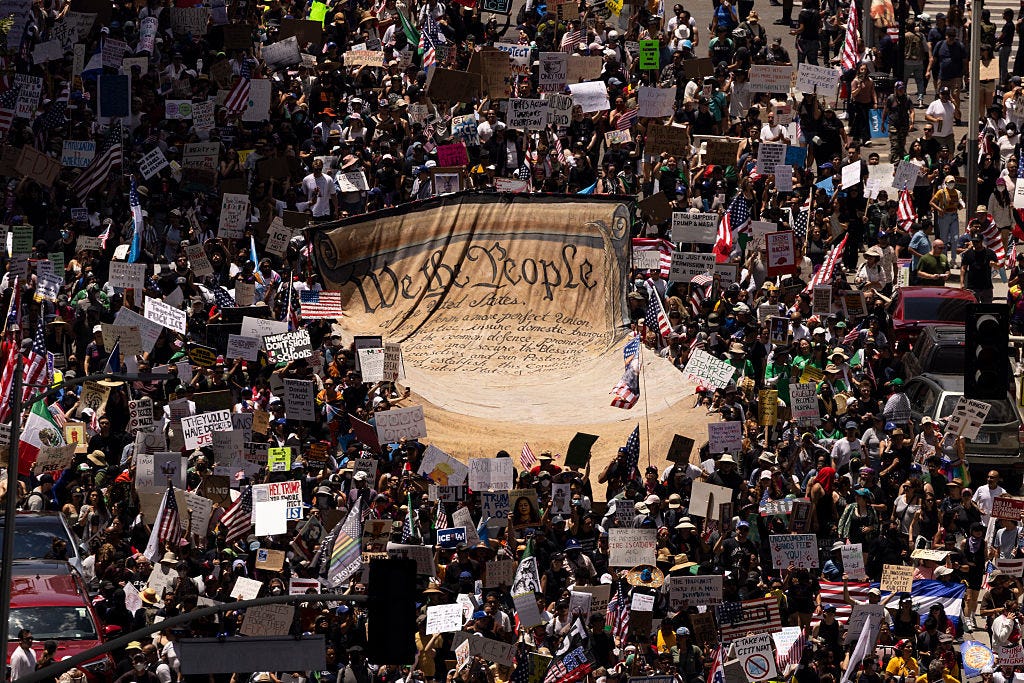Size matters
What the weekend’s demonstrations tell us about dueling visions of America in an uneasy era
Organizers estimate that more than 5 million people turned out this past Saturday to more than 2,100 rallies nationwide as part of the No Kings protests. Crowdsourcers and independent observers concur, suggesting the demonstration was the largest single-day show of opposition to the Donald Trump regime so far and possibly one of the largest single mass …



